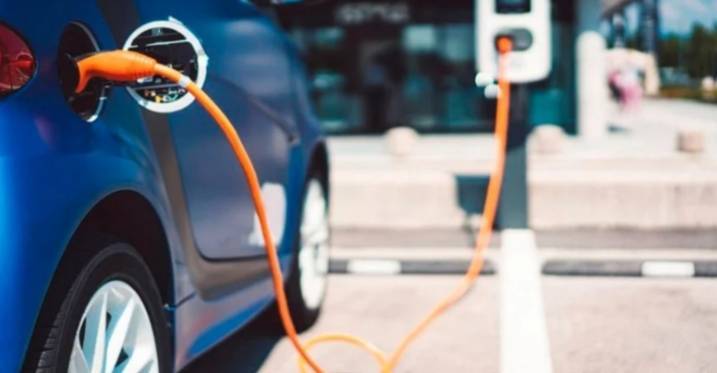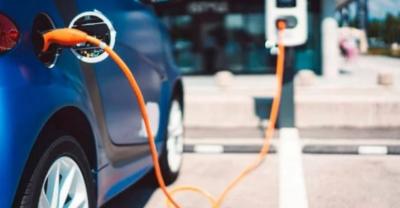Sales of electric cars have increased in recent years, but the industry still faces challenges. For instance, there are not enough electric cars available to replace traditional gasoline and diesel vehicles by 2050, in accordance with the timeline set by the Paris Conference 2015 for zero emissions. There are also difficulties in increasing the battery storage capacity of electric vehicles, as well as challenges in sourcing the necessary minerals for manufacturing, and growing criticism regarding emissions produced during the manufacturing phase.
Recently, however, there has been a rise in electric vehicle production and sales after years of stagnation. A recent study released by the Abdullah bin Hamad Al Attiyah International Foundation for Energy and Sustainable Development indicates that global sales of electric vehicles have risen significantly. While sales were around 120,000 electric vehicles worldwide in 2012, the number increased to approximately the same amount weekly in 2021, despite full lockdowns due to the COVID-19 pandemic. It is also apparent that the costs of manufacturing electric vehicles have decreased significantly over the past decade, and the types of electric vehicles have multiplied; there are now two-wheeled vehicles, three-wheeled vehicles, small cars, large cars, buses, and trucks.
Despite the noticeable increase in the number of electric vehicles, it is still insufficient to replace traditional cars by 2035, which is the necessary deadline to start banning the sale of traditional vehicles in preparation for achieving zero emissions by mid-century. According to Wikipedia, about 1.4 billion cars were on the roads in 2019, excluding trucks, buses, and motorcycles. The New York Post reports that electric vehicle sales in the United States rose by 66% in 2022 compared to the previous year. The newspaper adds that "we have no choice in this matter; some left-leaning states have enacted laws to completely ban the sale of traditional cars by 2035, as is the case in California, Oregon, Massachusetts, and New York. Washington state has enacted similar laws to start by 2030. There are 30 other countries that have enacted laws to prohibit the sale of traditional cars by 2035."
The newspaper comments that "this is foolish; this will not happen, as it is a form of magic. It is crucial to point out some truths about electric vehicles that politicians and green groups do not understand...". The report from the Al Attiyah Foundation elaborates on the emissions resulting from the manufacturing of electric vehicles, especially the emissions caused during the extraction of minerals used in the vehicle (lithium, cobalt, manganese, graphite, and nickel), as well as emissions from manufacturing the vehicle with these minerals. However, the report also acknowledges that, despite these emissions during the extraction and use of the aforementioned minerals, emissions are much lower than those produced by an internal combustion engine vehicle when it is driven.
A news report from Bloomberg Green Daily mentions India's experience, which aims to achieve zero emissions by 2070. Prime Minister Narendra Modi stated that India will support the electric vehicle industry with $3.4 billion in aid to accelerate production, so the sector is ready in 2070 to enter the zero emissions stage for the country, as current production is lagging behind this goal. According to Bloomberg, the objective is to support local battery production to reduce the most costly factor in manufacturing electric vehicles, and subsequently lower the price of Indian electric vehicles to enhance their global competitiveness in the future. There is also Indian government financial support of $2.3 billion to help in motorcycle production by developing advanced battery cells for them.
However, India faces a significant problem, as it does not have sufficient reserves of the required minerals to meet domestic market needs. Thus, how can India also compete in global markets? Indian statistics indicate that domestic demand for lithium-ion batteries is likely to increase by about 100% by 2030, not to mention fulfilling export market demand. A study from Bloomberg suggests that global demand for the second generation of lithium batteries has increased by about 50% last year alone. Projections indicate that demand could quadruple by the end of this decade, and the reserves of necessary minerals are relatively limited, leading to rising prices.
It is clear that electric vehicles are in the market now, and their numbers will increase over time, with improvements and developments similar to traditional cars that occurred during the twentieth century. However, several questions face this industry in the near future, as is the case with other industries.
Given the numbers mentioned above, is it possible to produce more than one billion cars globally by 2050? Laws are being enacted to ban the sale of traditional vehicles starting from 2030/2035 to 2050, but most of these regulations have been enacted in industrialized (Western) countries. In contrast, in the three continents (Asia, Africa, and Latin America) where most of the world's population resides, such legislation is rare. The priority in most developing countries is to combat extreme poverty, the cancer of corruption, improve public health and educational institutions, combat unemployment, and avert the dangers of wars and local military conflicts, as seen in the Middle East. Finally, where can billions of dollars be sourced to combat climate change in developing countries in light of these aforementioned requirements? What role will industrialized countries play in increasing their aid or fulfilling their previous commitments to address these priorities?




